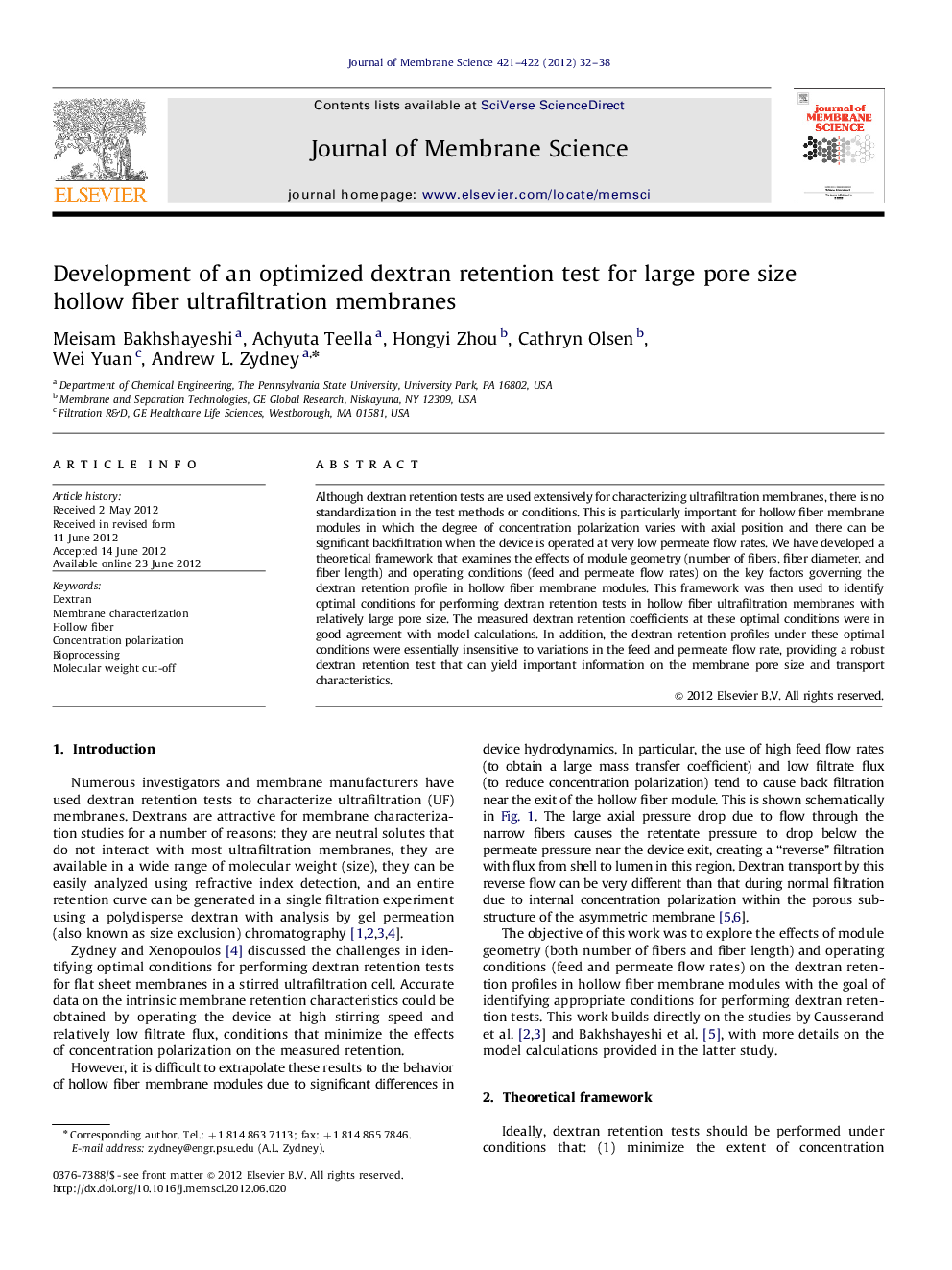| Article ID | Journal | Published Year | Pages | File Type |
|---|---|---|---|---|
| 634747 | Journal of Membrane Science | 2012 | 7 Pages |
Although dextran retention tests are used extensively for characterizing ultrafiltration membranes, there is no standardization in the test methods or conditions. This is particularly important for hollow fiber membrane modules in which the degree of concentration polarization varies with axial position and there can be significant backfiltration when the device is operated at very low permeate flow rates. We have developed a theoretical framework that examines the effects of module geometry (number of fibers, fiber diameter, and fiber length) and operating conditions (feed and permeate flow rates) on the key factors governing the dextran retention profile in hollow fiber membrane modules. This framework was then used to identify optimal conditions for performing dextran retention tests in hollow fiber ultrafiltration membranes with relatively large pore size. The measured dextran retention coefficients at these optimal conditions were in good agreement with model calculations. In addition, the dextran retention profiles under these optimal conditions were essentially insensitive to variations in the feed and permeate flow rate, providing a robust dextran retention test that can yield important information on the membrane pore size and transport characteristics.
Graphical AbstractFigure optionsDownload full-size imageDownload high-quality image (119 K)Download as PowerPoint slideHighlights► Theoretical framework developed for effects of module geometry and operating conditions on dextran retention profile. ► Dextran retention test reflects balance between concentration polarization and backfiltration. ► Optimal conditions identified for performing dextran retention tests. ► Dextran retention profile under optimal conditions is robust to variations in feed and permeate flow rates.
